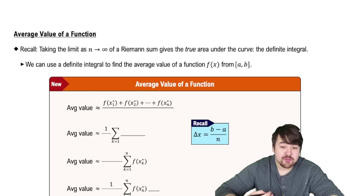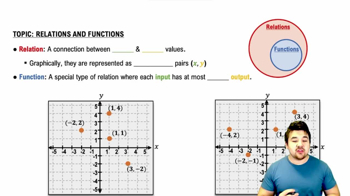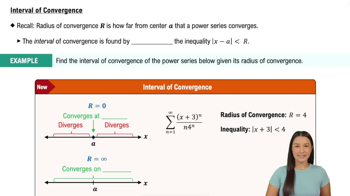Use the graph of in the figure to find the following values or state that they do not exist. <IMAGE>
Table of contents
- 0. Functions7h 54m
- Introduction to Functions16m
- Piecewise Functions10m
- Properties of Functions9m
- Common Functions1h 8m
- Transformations5m
- Combining Functions27m
- Exponent rules32m
- Exponential Functions28m
- Logarithmic Functions24m
- Properties of Logarithms36m
- Exponential & Logarithmic Equations35m
- Introduction to Trigonometric Functions38m
- Graphs of Trigonometric Functions44m
- Trigonometric Identities47m
- Inverse Trigonometric Functions48m
- 1. Limits and Continuity2h 2m
- 2. Intro to Derivatives1h 33m
- 3. Techniques of Differentiation3h 18m
- 4. Applications of Derivatives2h 38m
- 5. Graphical Applications of Derivatives6h 2m
- 6. Derivatives of Inverse, Exponential, & Logarithmic Functions2h 37m
- 7. Antiderivatives & Indefinite Integrals1h 26m
- 8. Definite Integrals4h 44m
- 9. Graphical Applications of Integrals2h 27m
- 10. Physics Applications of Integrals 3h 16m
- 11. Integrals of Inverse, Exponential, & Logarithmic Functions2h 31m
- 12. Techniques of Integration7h 41m
- 13. Intro to Differential Equations2h 55m
- 14. Sequences & Series5h 36m
- 15. Power Series2h 19m
- 16. Parametric Equations & Polar Coordinates7h 58m
1. Limits and Continuity
Introduction to Limits
Problem 5a
Textbook Question
The table gives the position s(t)of an object moving along a line at time t, over a two-second interval. Find the average velocity of the object over the following intervals. <IMAGE>
a. [0,2]
 Verified step by step guidance
Verified step by step guidance1
Identify the formula for average velocity over an interval [a, b], which is given by the change in position divided by the change in time: \( v_{avg} = \frac{s(b) - s(a)}{b - a} \).
Determine the values of \( s(a) \) and \( s(b) \) from the table for the interval [0, 2]. These represent the position of the object at times t = 0 and t = 2, respectively.
Substitute the values of \( s(0) \) and \( s(2) \) into the average velocity formula: \( v_{avg} = \frac{s(2) - s(0)}{2 - 0} \).
Simplify the expression by calculating the difference \( s(2) - s(0) \) to find the change in position.
Divide the change in position by the change in time (which is 2 seconds) to find the average velocity over the interval [0, 2].
 Verified video answer for a similar problem:
Verified video answer for a similar problem:This video solution was recommended by our tutors as helpful for the problem above
Video duration:
2mPlay a video:
Was this helpful?
Key Concepts
Here are the essential concepts you must grasp in order to answer the question correctly.
Average Velocity
Average velocity is defined as the change in position divided by the time interval over which that change occurs. Mathematically, it is expressed as (s(t2) - s(t1)) / (t2 - t1), where s(t) represents the position function. This concept is crucial for understanding how an object's position changes over time and is fundamental in analyzing motion.
Recommended video:

Average Value of a Function
Position Function
The position function s(t) describes the location of an object at any given time t. It provides a mathematical representation of the object's trajectory along a line. Understanding this function is essential for calculating average velocity, as it allows us to determine the specific positions at the start and end of the time interval.
Recommended video:

Relations and Functions
Time Interval
A time interval is the duration over which motion is observed, typically denoted as [t1, t2]. In this context, it is the period during which the average velocity is calculated. Recognizing the significance of the time interval is important for accurately determining changes in position and understanding the object's motion dynamics.
Recommended video:

Interval of Convergence

 6:47m
6:47mWatch next
Master Finding Limits Numerically and Graphically with a bite sized video explanation from Patrick
Start learningRelated Videos
Related Practice
Textbook Question
